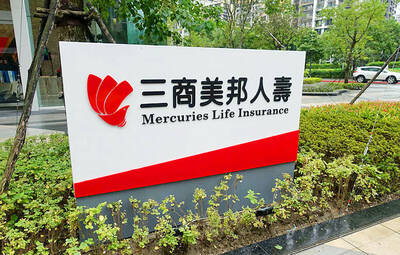US President Donald Trump’s “America first” approach is likely to affect Taiwan’s export performance, the Ministry of Economic Affairs said on Saturday in response to the US president’s inauguration speech.
Economists urged the government to come up with countermeasures against possible effects of the Trump administration, which has been leaning toward protectionism, as the US is one of the largest buyers of Taiwan-made goods.
Department of Statistics Director-General Lin Lee-jen (林麗貞) appeared cautious about the US trade policy after Trump pushed the “America first” theme in his inaugural address on Friday.
Lin said that although Trump needs some time to implement his new trade policy, which is expected to give Taiwanese exporters a buffer against US protectionism, Taiwan cannot afford to ignore the possible changes in business ties between the US and China, where Taiwanese firms such as Hon Hai Precision Industry Co (鴻海精密) have built up broad protection sites to penetrate the US market.
After Trump’s inauguration, the White House announced its withdrawal from the Trans-Pacific Partnership (TPP), a trade pact championed by former US president Barack Obama. Taiwan has been keen to join the TPP trade bloc, but Gordon Sun (孫明德), director of the Economic Forecasting Center at the Taiwan Institute of Economic Research (台灣經濟研究院), said that things have changed and that Taiwan should seek a new approach in an era without the TPP.
Taiwan has been pushing its “new southbound policy,” so it is necessary for the nation to link this policy and its trade ties with the US, Sun said.

Mercuries Life Insurance Co (三商美邦人壽) shares surged to a seven-month high this week after local media reported that E.Sun Financial Holding Co (玉山金控) had outbid CTBC Financial Holding Co (中信金控) in the financially strained insurer’s ongoing sale process. Shares of the mid-sized life insurer climbed 5.8 percent this week to NT$6.72, extending a nearly 18 percent rally over the past month, as investors bet on the likelihood of an impending takeover. The final round of bidding closed on Thursday, marking a critical step in the 32-year-old insurer’s search for a buyer after years of struggling to meet capital adequacy requirements. Local media reports

US sports leagues rushed to get in on the multi-billion US dollar bonanza of legalized betting, but the arrest of an National Basketball Association (NBA) coach and player in two sprawling US federal investigations show the potential cost of partnering with the gambling industry. Portland Trail Blazers coach Chauncey Billups, a former Detroit Pistons star and an NBA Hall of Famer, was arrested for his alleged role in rigged illegal poker games that prosecutors say were tied to Mafia crime families. Miami Heat guard Terry Rozier was charged with manipulating his play for the benefit of bettors and former NBA player and

The DBS Foundation yesterday announced the launch of two flagship programs, “Silver Motion” and “Happier Caregiver, Healthier Seniors,” in partnership with CCILU Ltd, Hondao Senior Citizens’ Welfare Foundation and the Garden of Hope Foundation to help Taiwan face the challenges of a rapidly aging population. The foundation said it would invest S$4.91 million (US$3.8 million) over three years to foster inclusion and resilience in an aging society. “Aging may bring challenges, but it also brings opportunities. With many Asian markets rapidly becoming super-aged, the DBS Foundation is working with a regional ecosystem of like-minded partners across the private, public and people sectors

BREAKTHROUGH TECH: Powertech expects its fan-out PLP system to become mainstream, saying it can offer three-times greater production throughput Chip packaging service provider Powertech Technology Inc (力成科技) plans to more than double its capital expenditures next year to more than NT$40 billion (US$1.31 billion) as demand for its new panel-level packaging (PLP) technology, primarily used in chips for artificial intelligence (AI) applications, has greatly exceeded what it can supply. A significant portion of the budget, about US$1 billion, would be earmarked for fan-out PLP technology, Powertech told investors yesterday. Its heavy investment in fan-out PLP technology over the past 10 years is expected to bear fruit in 2027 after the technology enters volume production, it said, adding that the tech would